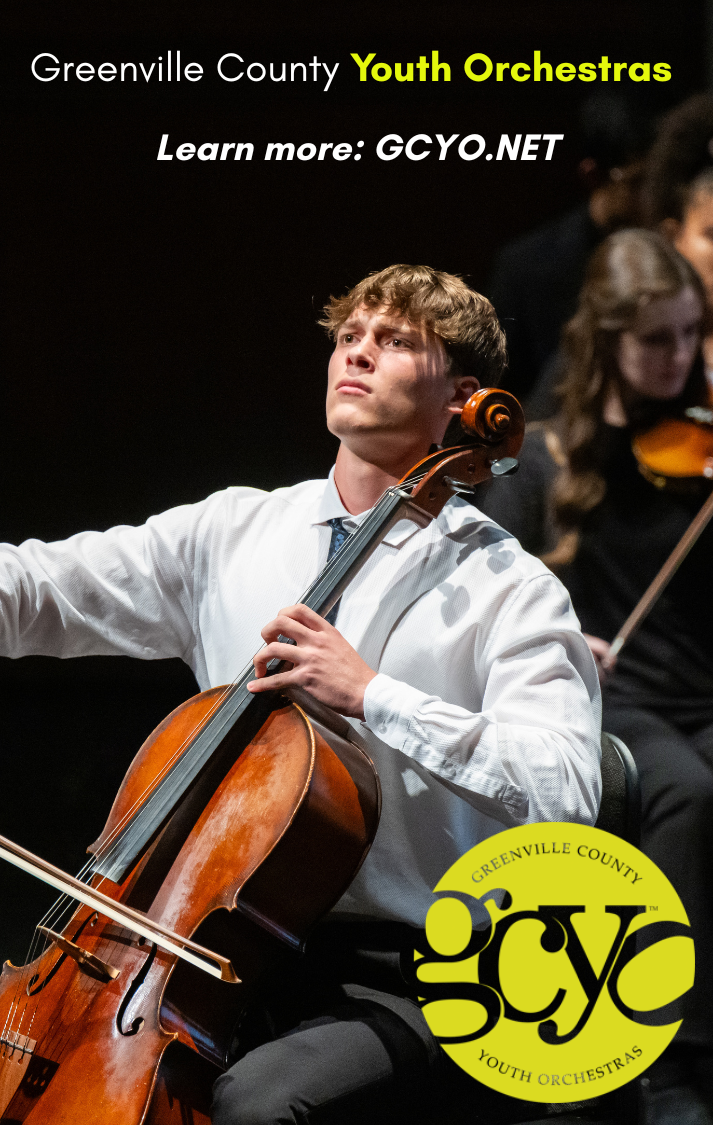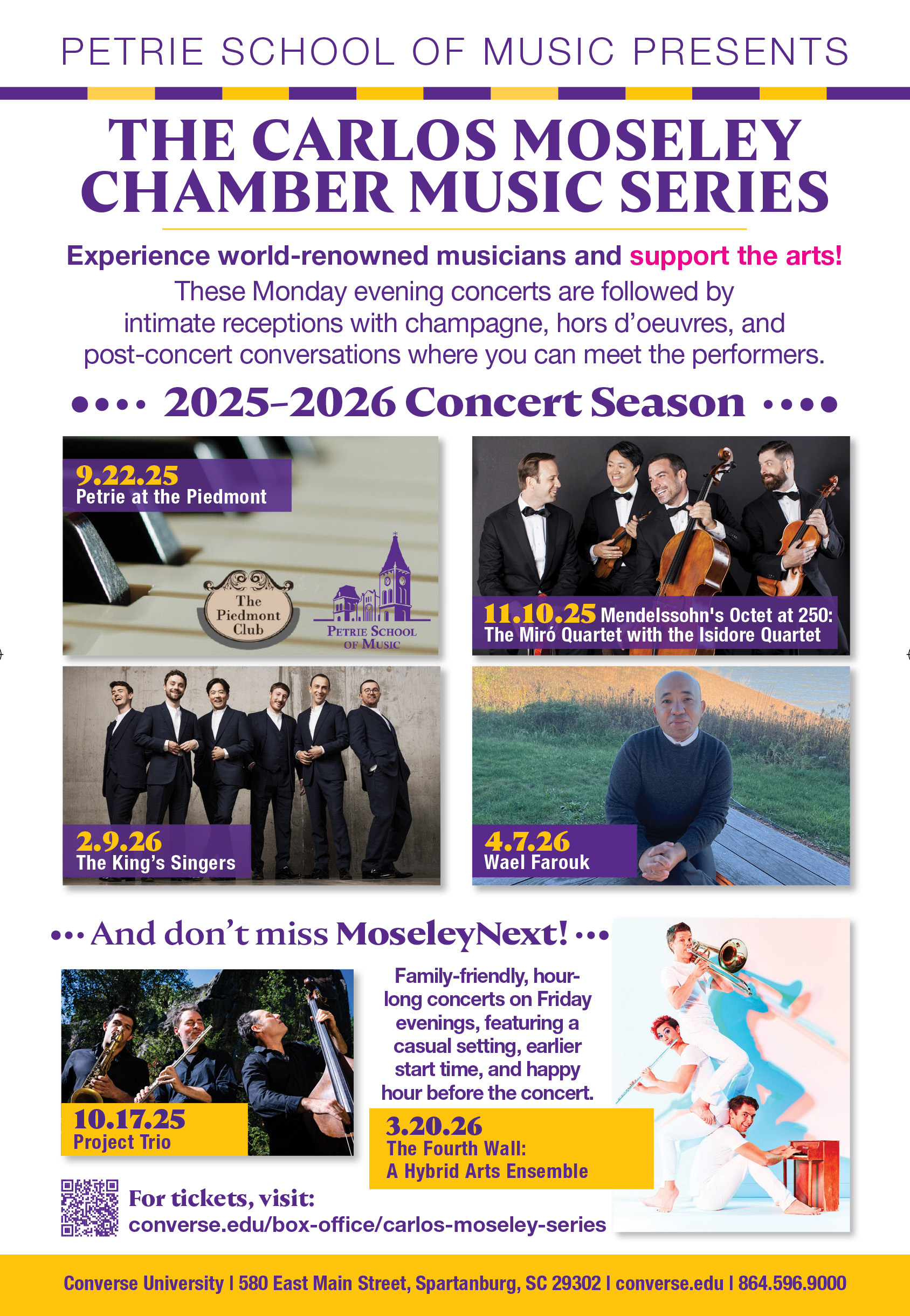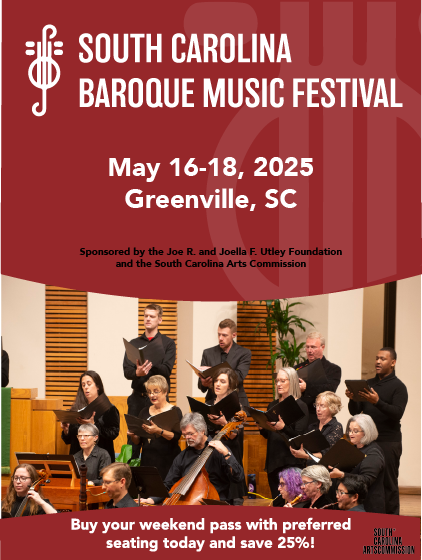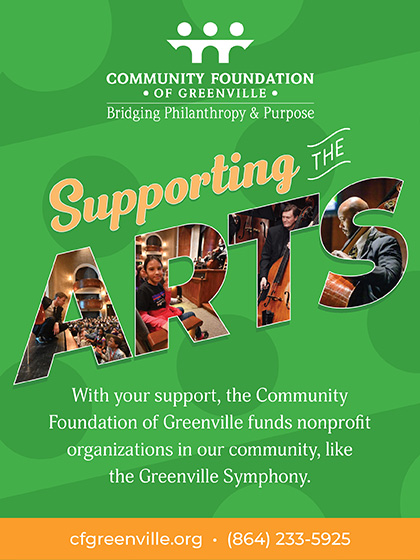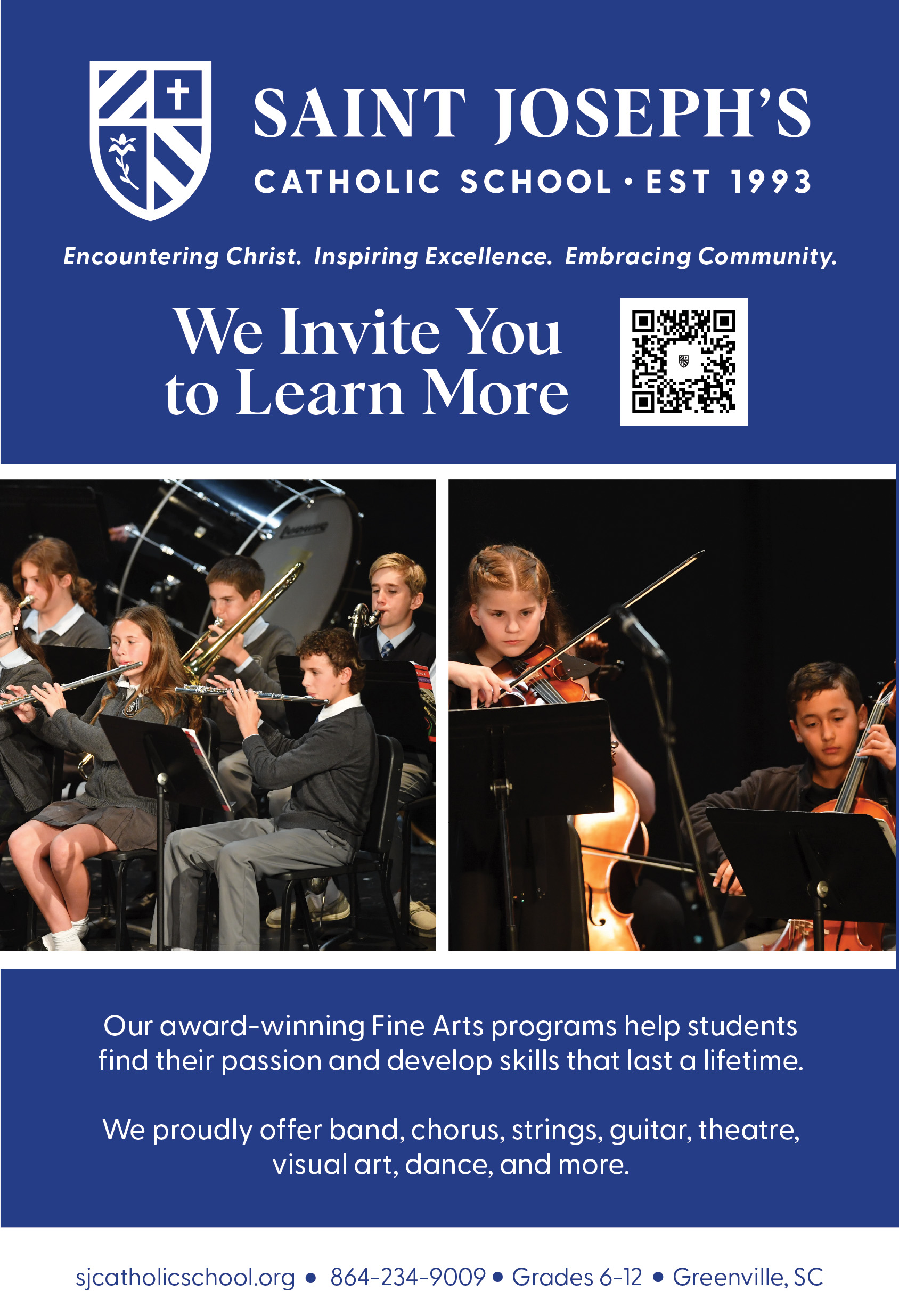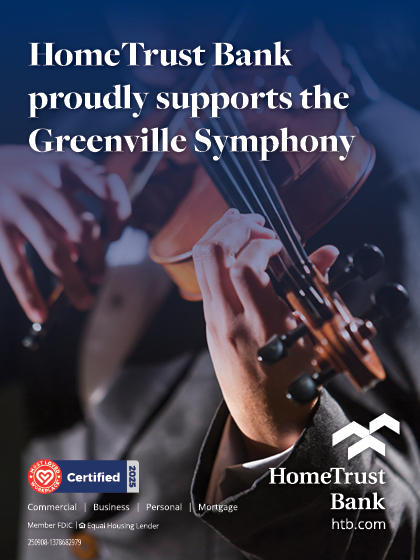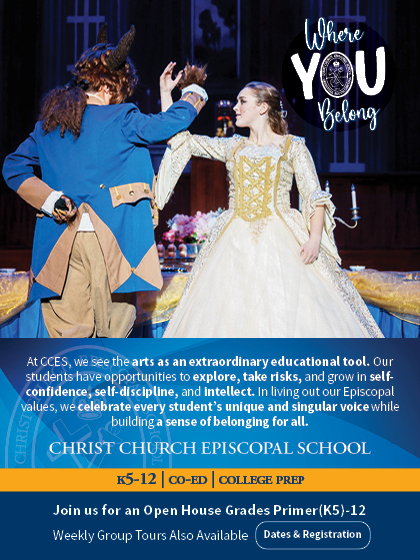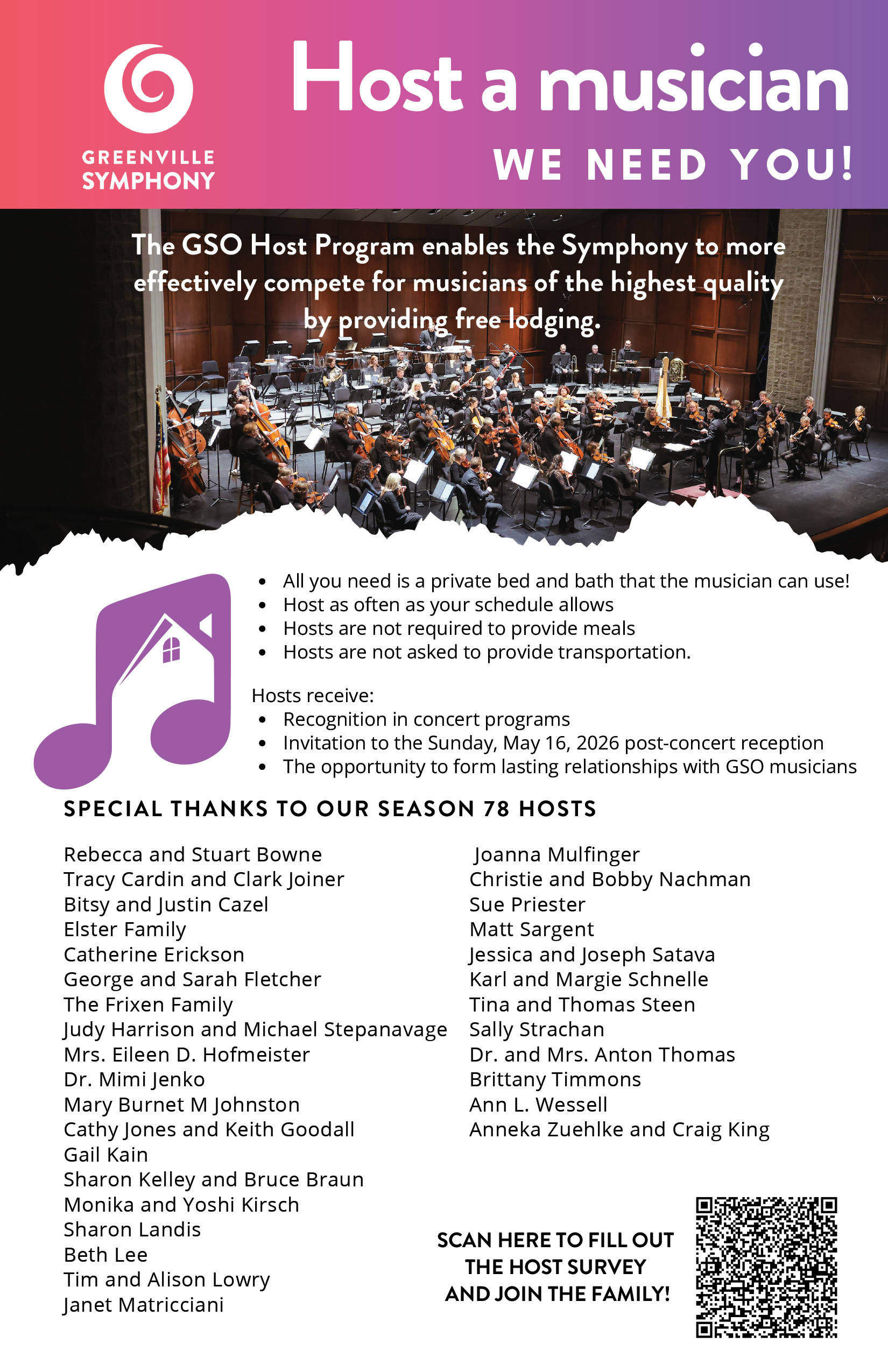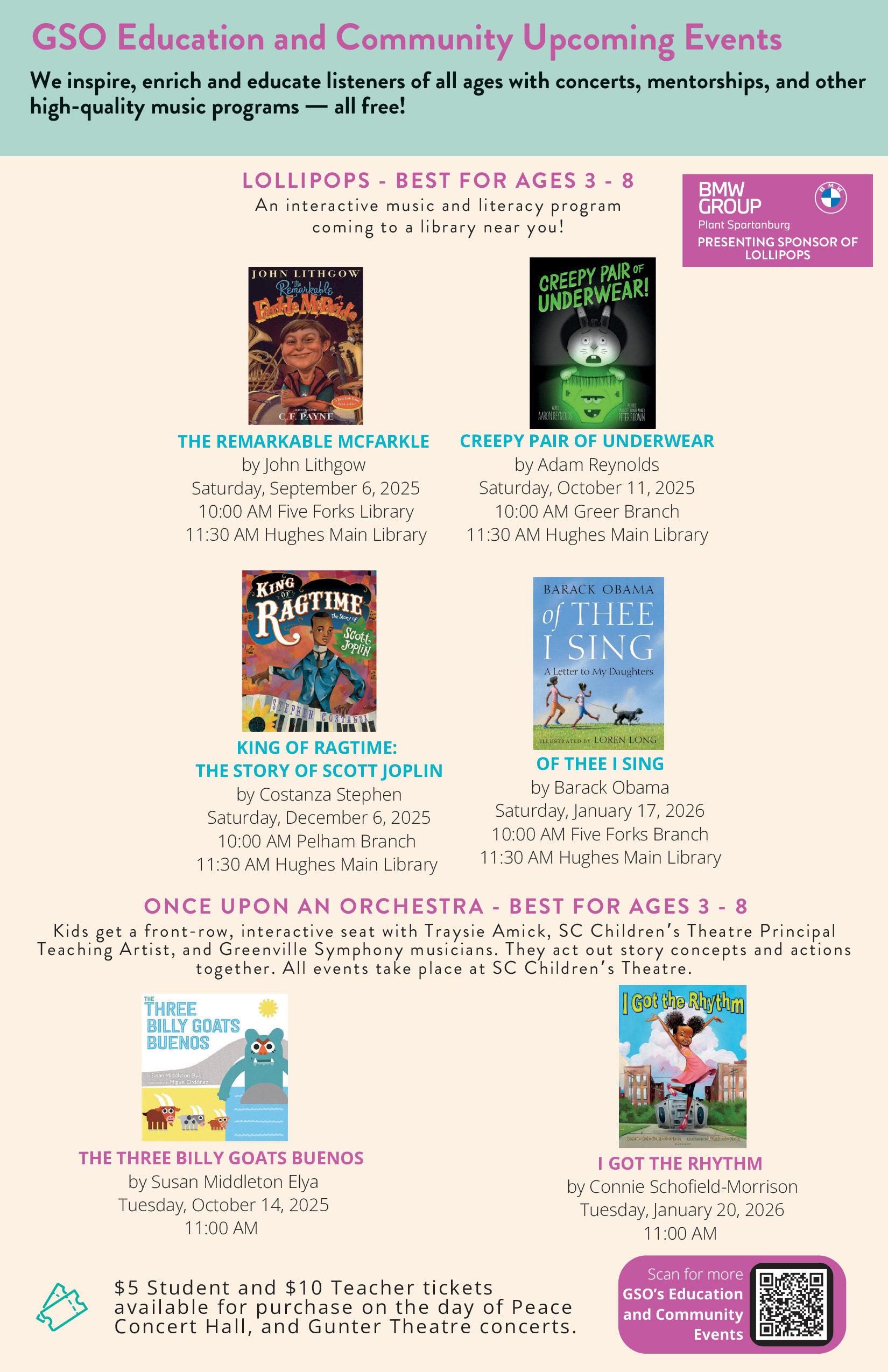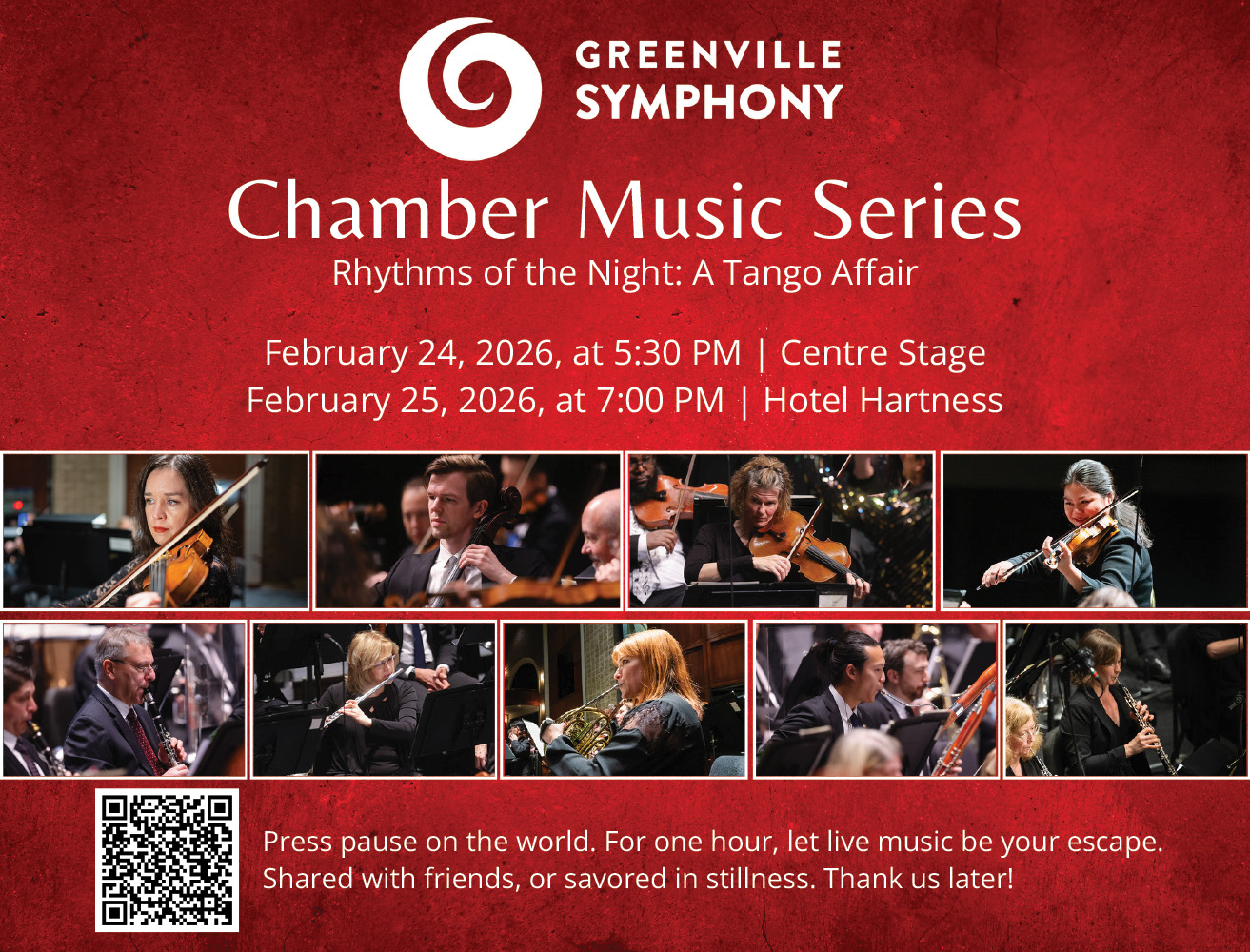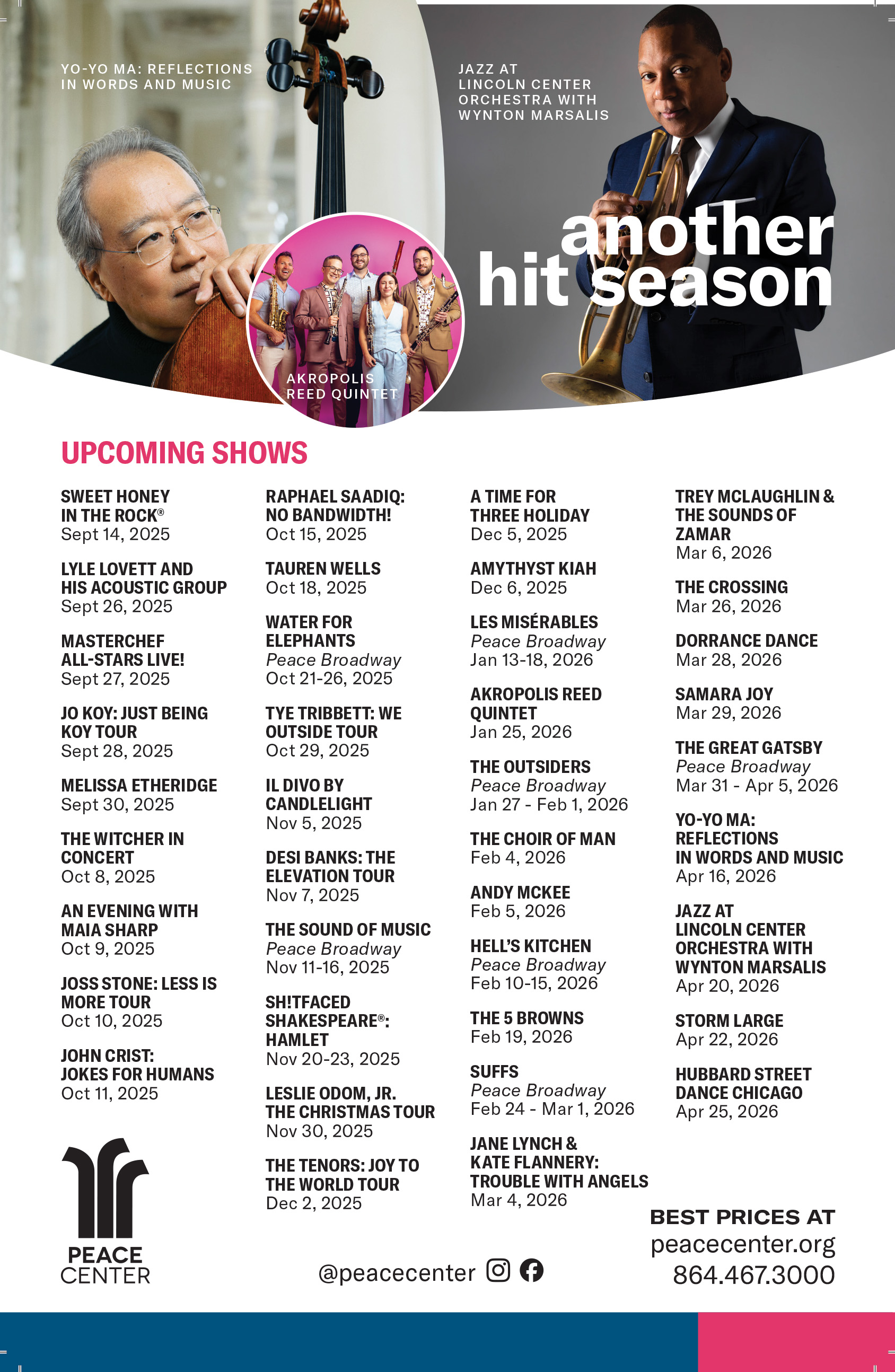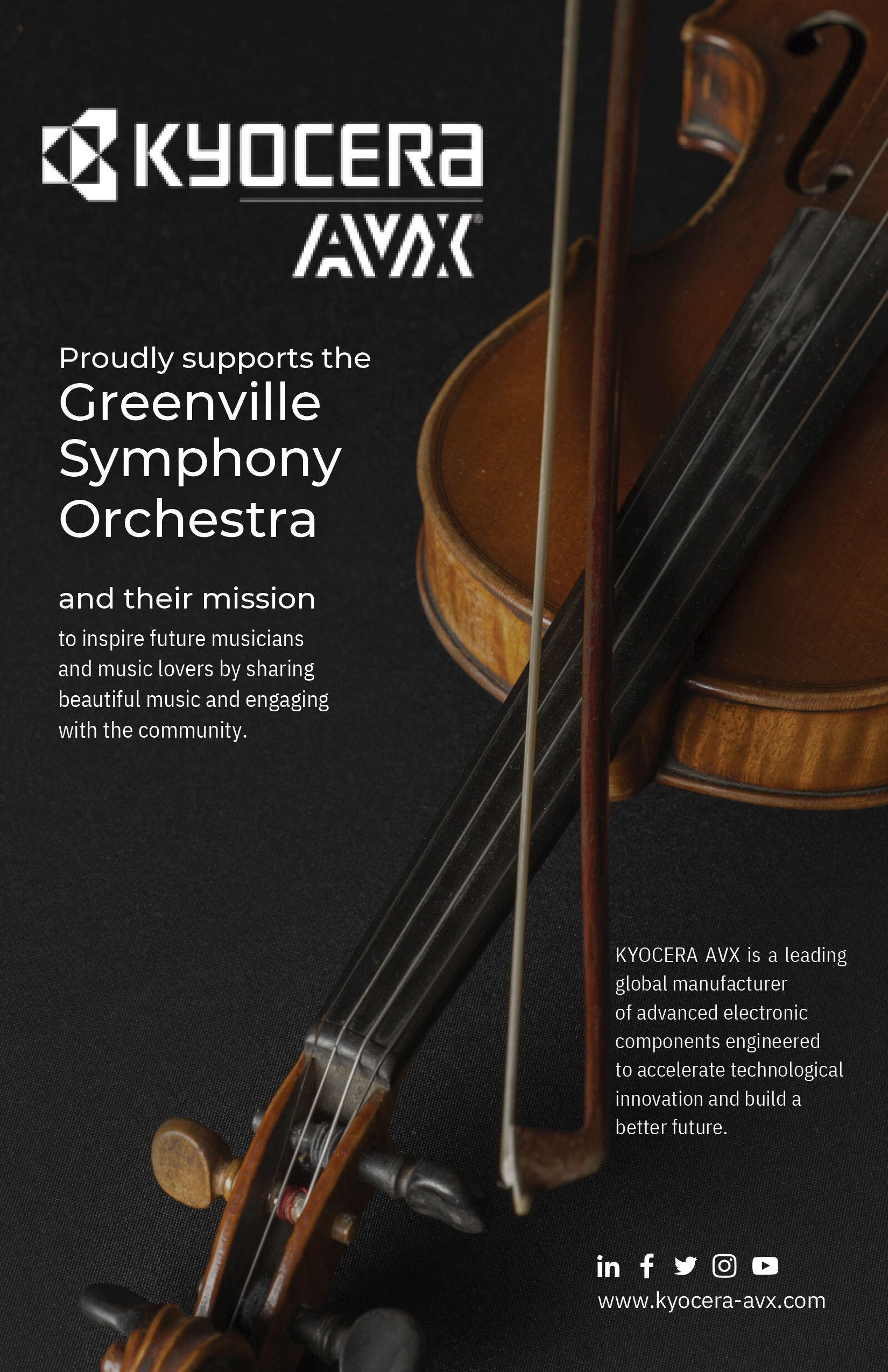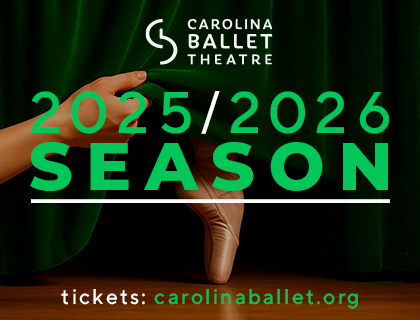

Lee Mills, Music Director
Thomas A. and Shirley W. Roe Podium Fund

Gunter Theatre
Saturday, November 1 | 3:00 pm
Sunday, November 2 | 3:00 pm
Mimi Wyche | narrator
With a new narration by Mark Waldrop

| Edvard Grieg (1843-1907) Peer Gynt, Suite for Orchestra No. 1, op.46 | 13' | |
| Sergei Prokofiev (1891-1953) Peter and the Wolf | 25' |
This concert is sponsored in part by
Peter and the Wolf
Program Notes by Paul Hyde
‘Peer Gynt’ Suite No. 1 or ‘The Adventures of RaeLynn and Luke’
Edvard Grieg (1843-1907)
Edvard Grieg's Peer Gynt Suite No. 1, composed in 1888, is one of the Norwegian composer’s most celebrated works. Grieg's music is notable for its tunefulness and vivid orchestration.
Originally composed for Henrik Ibsen’s fantasy play Peer Gynt, the music in this performance tells a new tale, conceived last year by Broadway writer and director Mark Waldrop.
Waldrop reimagines the story as The Adventures of RaeLynn and Luke, about two young siblings who journey into the South Carolina woods and have an encounter with ogre-like creatures called gobblewalkers.
The familiar opening melody, “Morning Mood,” depicts RaeLynn and Luke setting off on a trail in Caesar’s Head State Park and relishing the sights and sounds of the Blue Ridge Mountains. Grieg’s music, warm and lyrical, evokes the freshness of morning and a slow sunrise. Flute and oboe introduce the gentle main theme, soon taken up by strings.
“Ase’s Death,” originally written as incidental music for the death of Peer Gynt’s mother, represents in Waldrop’s new narrative a somber episode of a beautiful stag in the woods that has been killed, apparently by the gobblewalkers. The music here is chordal in nature, rising passionately from the beginning toward the center of the movement before falling back poignantly.
“Anitra’s Dance” evokes a magical scene of fireflies while the famous “In the Hall of the Mountain King” depicts the children’s frightening encounter with the gobblewalkers. The main theme in this movement is repeated relentlessly and tossed to various instruments as it builds to a feverish intensity.
At the end of Waldrop’s story, the “Morning Scene” movement returns to signal that the children have returned home safe.
Peter and the Wolf
Sergei Prokofiev (1891-1953)
Peter and the Wolf is a charming and imaginative story with music, the latter written in 1936 by the Russian composer Sergei Prokofiev. It’s a symphonic fairy tale, designed in part to introduce listeners, especially children, to the sounds of different orchestral instruments.
The story is about a young boy named Peter who lives with his grandfather in the countryside. Despite his grandfather's warnings about the dangers of a wolf that prowls nearby, Peter ventures out and decides to capture the wolf.
The Greenville Symphony Orchestra commissioned Broadway writer and director Mark Waldrop last year to create a new version of the traditional story. Fans of Peter and the Wolf will notice that Waldrop’s updated narrative offers a gentler account of the original story.
Waldrop also included several references that will be familiar to Upstate residents. The action, for instance, takes place near Peter’s house in Walhalla, the small town in the shadows of the Blue Ridge Mountains. The bird in the updated story is a small Carolina chickadee. The Greenville Zoo also makes a cameo.
The narrative is accompanied by music that represents different characters and elements of the story:
-- Peter is represented by the spirited, frolicsome strings.
-- The Bird is portrayed by the flute, with its bright, fluttering notes.
-- The Duck is symbolized by the oboe, with a quacking sound.
-- The Cat is played by the clarinet, reflecting its sly and sneaky nature.
-- The Wolf is represented by the French horns, creating a menacing, growling sound.
-- Grandfather is depicted by the bassoon, with a gruff and somewhat comical tone.
-- The Hunters are illustrated by the timpani and bass drum, providing a rhythmic, marching sound.
The story unfolds as Peter outsmarts the wolf with the help of his animal friends, eventually leading to the wolf being captured. The engaging music vividly depicts the characters and action, making the piece a delightful experience for listeners of all ages.
Paul Hyde, a longtime arts journalist, is an English instructor at Tri-County Technical College. He writes regularly for the Greenville Journal, the S.C. Daily Gazette, EarRelevant, ArtsATL, and the Atlanta Journal-Constitution. Readers may write to him at paulhydeus@yahoo.com.
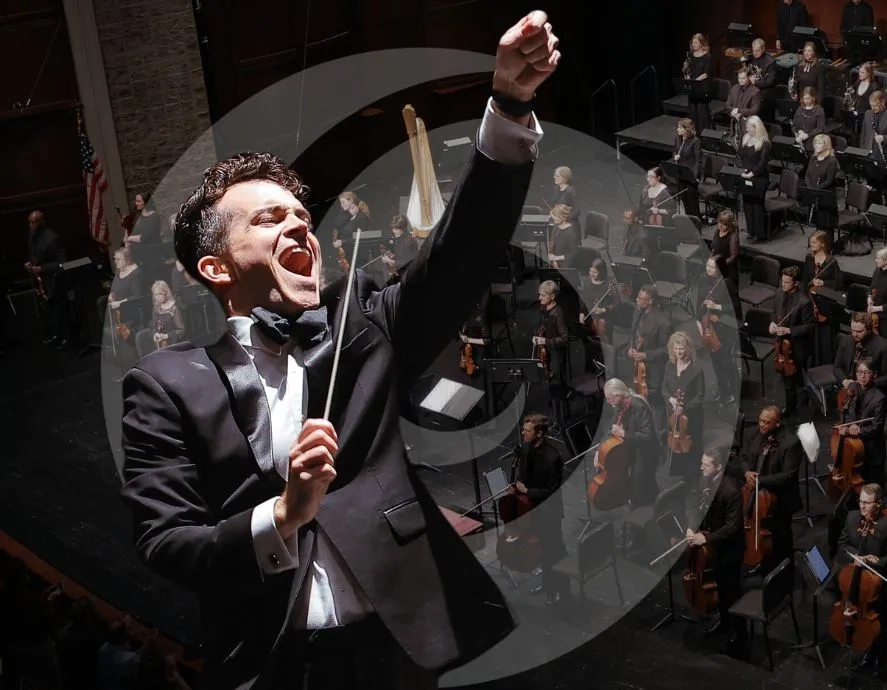
Concert Hall Series
Saturday performances at 7:30
Sunday at 3:00 pm
Opening Night: Hollywood Retrospective
October 4 & 5
An American in Paris
November 22 & 23
Dvořák’s Cello Concerto
February 7 & 8
Grand Canyon Suite + Rachmaninoff 2
March 14 & 15
West Side Story Symphonic Dances
+ Fanfare for the Common Man
April 11 & 12
Season Finale: Porgy and Bess
May 16 & 17
Gunter Theatre Series
Peter and the Wolf
November 1 at 3:00 pm
November 2 at 3:00 pm
Dvořák’s American String Quartet
February 14 at 7:30 pm
February 15 at 3:00 pm
The Last Five Years:
American Music Now
March 28 at 7:30 pm
March 29 at 3:00 pm
Dicey Langston:
The South Carolina Girl Who Defied an Army
April 25 at 3:00 pm
April 26 at 3:00 pm
Special Concerts
Holiday at Peace
December 12 at 7:00 pm
December 13 at 7:00 pm
December 14 at 2:00 pm
Peace Center
Harry Potter and the Goblet of Fire™ in Concert
January 10 at 1:00 pm and 7:00 pm
January 11 at 2:00
Peace Center
Chamber Music Series
American Echoes: from Apollo to Bluegrass
September 23 at 5:30 pm, Warehouse Theatre
September 24 at 7:00 pm, Hotel Hartness
Rhythms of the Night: A Tango Affair
February 24 at 5:30 pm, Centre Stage
February 25 at 7:00 pm, Hotel Hartness
Details and tickets available at greenvillesymphony.org


